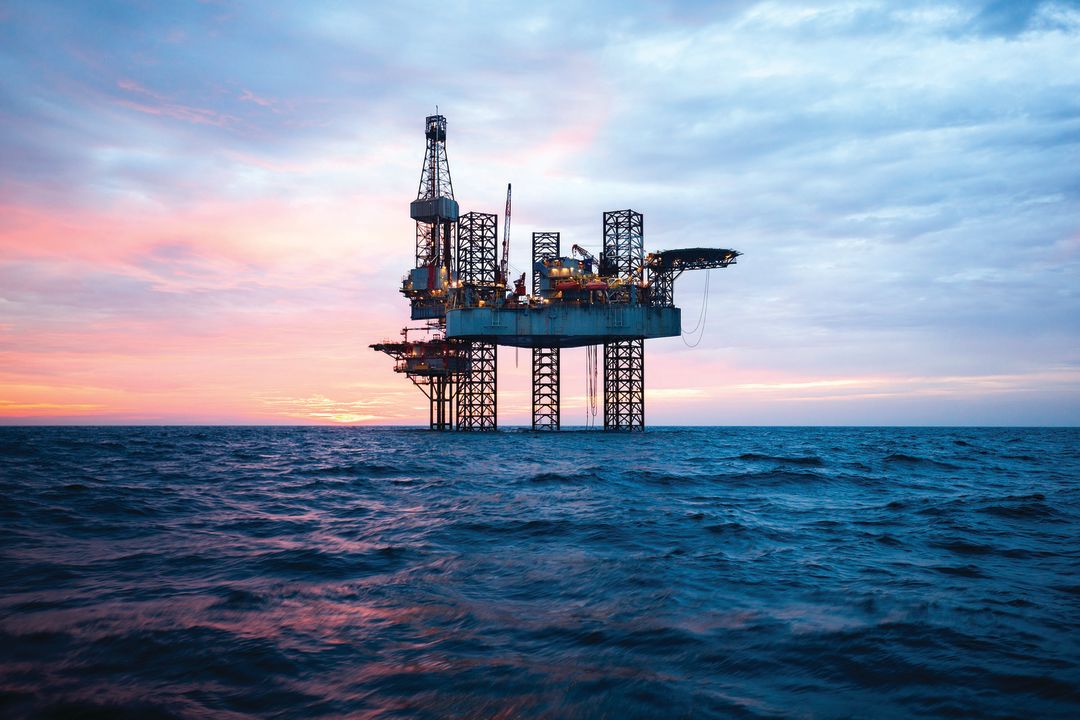Ten Years After Deepwater Horizon, the Possibility of Offshore Oil Drilling in the Gulf Has Resurfaced

An offshore oil rig stands miles out in the Gulf.
Image: Shutterstock
Ten years ago, in June 2010, I stood on a Florida beach that I had played on as a child and watched thick globs of oil wash ashore and taint the sugar-white sands.
The oil had traveled up from beneath the Gulf of Mexico, then spewed into the water through what was left of the Deepwater Horizon offshore drilling rig, 5,000 feet below the surface and about 150 miles off the Louisiana coast. It floated for days across the Gulf before finally showing up at Pensacola Beach. The glistening blobs mingled in the surf line with broken sand dollars and calico shells, looking like a cross between chocolate pudding and dead jellyfish.
Before Deepwater Horizon, some Florida politicians were talking about allowing oil companies to drill for oil in the eastern Gulf as long as they stayed three miles offshore—far enough from the beaches that the tourists wouldn’t notice the rigs, they said. After the 2010 disaster, and the damage it did to the beach-based tourism industry, you couldn’t find a single one to admit they ever supported it.
Thus, when the Trump Administration announced in 2017 its plans to expand drilling off Florida’s shore, even pro-Trump Florida politicians objected. In 2018, the Interior Department promised it would drop Florida from its plans.
But in June 2020, Politico reported that the Interior Department was laying plans to put Florida’s beaches at risk all over again. Knowing the political ramifications for his re-election campaign, the story said, the Trump Administration would hold off announcing this until after the November election.
“The eastern Gulf is the ‘golden trophy’ for the industry because it could be producing oil within 10 years using existing infrastructure from the Gulf’s western portion,” wrote Politico reporter Ben Lefebvre, who has covered the energy industry for nearly a decade.
The Interior Department’s press office called the Politico article “fake news,” contending that “current offshore plans do not expire until 2022, and Interior does not plan to issue a new report in November.” However, as a highly skeptical editorial in the South Florida Sun-Sentinel pointed out, “What about December, or January, or any of the other 48 months of a second Donald Trump term?”
Interior’s original plan to open the eastern Gulf to drilling was drawn up under then-Interior Secretary Ryan Zinke. The Zinke plan called for sinking wells not just in the eastern Gulf, but also along 90 percent of the U.S. coastline. Then-Gov. Rick Scott asked Zinke to take Florida off the table. When Zinke said yes, other governors jumped in to request their states be exempted, too. Zinke pulled back his plan.
Zinke was forced to resign in late 2018 while being investigated for making a land development deal with the chairman of energy giant Halliburton, which in 2014 agreed to a $1.1 billion settlement for its role in the Deepwater Horizon disaster. He was replaced by David Bernhardt, a former lobbyist for the oil and gas industry.
In 2019 the Wall Street Journal reported that Bernhardt had decided to “sideline” the new offshore drilling plan indefinitely, but Bernhardt said that story misinterpreted his intentions. He just meant he wasn’t in a big rush to roll out a new five-year drilling plan.
When Trump visited Tampa in early August, a reporter from Bay News 9 asked him about offshore drilling in the eastern Gulf. “The people of Florida just don’t want it,” he said. “You know, there are some states that don’t mind it, but Florida does. And I live here too, and I vote here. And I will tell you that’s not going to be happening.”
Environmental experts and watchdogs around the state and U.S. are skeptical. “It’s no surprise to see President Trump change his tune about oil drilling off Florida coasts with a close election in a key state looming,” says Susan Glickman of the Southern Alliance for Clean Energy. “But there is no guarantee he will keep that promise if re-elected. Trump rolled back key safety measures to avoid disasters like the Deepwater Horizon blowout, and it devastated Florida’s tourism and seafood industry.”
In August, the Trump administration approved oil drilling in the pristine Artic National Wildlife Refuge in Alaska, overturning 60 years of protections. “My guess is Trump would move to drill in a second term,” Glickman says.
Congressman Vern Buchanan said in an email he would fight any plan to drill, and Sen. Marco Rubio is proposing an amendment to extend the ban through 2032.
One thing has not changed in the decade since the Deepwater Horizon disaster. Despite attempts to clean it up, oil from the sunken rig continues polluting the Gulf and affecting fish and other marine species, according to findings by USF scientists.
That oil is likely to stick around. USF scientists surveyed areas in Mexico that were affected by a 1979 oil spill from a rig called Ixtoc 1, a spill that mirrored the circumstances of the Deepwater Horizon spill. Thirty years later, they still found pockets of oil that the spill had left behind.



